Why a Visitor Management System is Important
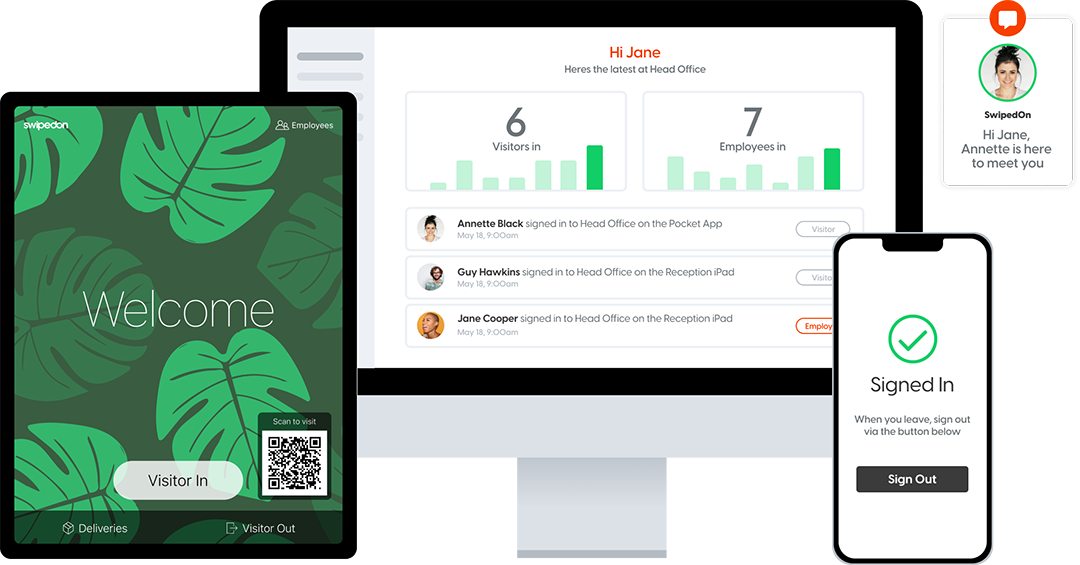
Initially known for streamlining existing front-desk operations, a digital visitor check in system wasn't considered a necessity before data privacy and the pandemic.
As businesses started to operate again during the pandemic, visitor management systems (VMS) quickly became an important tool for every organization; from schools to manufacturing facilities and aged care facilities, the software was - and still is - vital for tracking and collecting visitor data while ensuring privacy and compliance.
What is Visitor Management Software?
A visitor management solution helps businesses automate and streamline the visitor management process by pre-registering and digitally signing in visitors, and recording visitor information for company records. The software is customizable to match company branding and ensures data collection is aligned with data privacy regulations.
These systems are currently solving workplace safety and compliance problems by tracking important visitor information and screening out high-risk individuals from entering the premises.
Why Do I Need a Visitor Management System?
There are several reasons visitor management systems and a workplace sign in app are a critical part of office modernization. Here are a few key reasons:
To Improve Efficiency
With the complexity of modern workplaces, front desk staff must be efficient. A traditional visitor management process requires a guest to visit the front desk, fill out the logbook with their name and contact information, and provide the time and purpose of the visit. The front desk personnel then inform the concerned employee of the presence of the visitor. This process takes a lot of time and effort on the part of employees and is highly inefficient.
With a digital visitor management system in place, visitors simply enter their name, and the appropriate employee will be notified of their arrival.
A visitor management system also manages employee movement since they can use the same system to clock employees in and out through a digital employee in out board or a workplace sign in app.
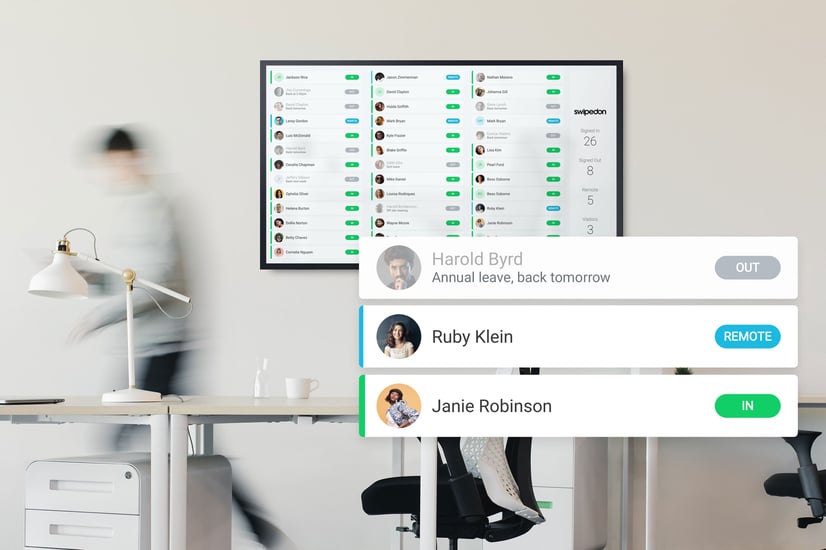
To Ensure Safety
Employee and visitor safety is essential for any business. A 2021 survey showed that 68% of employees report not feeling safe working within their company’s buildings, and some even report looking for other jobs due to safety concerns. Furthermore, 30% of respondents expressed concerns about companies’ failures to implement technology to make workplaces safer.
With a visitor management system in place, building managers know who currently is - and who has been - on the premises. This information is also useful for locating people in an emergency.
To Promote Branding
A visitor management system is also critical for your business branding because it helps create an impact as soon as guests and potential clients step into the building. Since the reception area serves as the point of entry, companies need to build a warm and professional first impression.
A digital sign-in system with the latest technology and data-compliant systems can help communicate that an organization is digitally forward. Since the VMS alerts employees of their guests, they already know who they will meet in the lobby and can be prepared to greet them.
Let's explore in more detail why visitor management software is more important than ever with these 9 reasons.
1. Prioritizes the safety of your staff
While visitor management systems produce superior benefits to traditional logbooks, businesses which may be resistant to change often pass over the opportunity because the system doesn’t appear to solve any pressing issues.
However, when COVID-19 hit and businesses began reopening after lockdowns, building managers had no option but to look to visitor management systems as an important tool to prioritize the safety of staff. Traditional logbooks fail to ensure the safety of staff and the workplace. Not only can visitor management software provide touchless sign-ins, but it also has the ability to aid emergency evacuations, perform visitor screening and protect employee data.
2. Mitigates health risk in the workplace
A VMS helps businesses effectively assess the health, and level of risk, of any individual entering the workplace. The reception area - and visitor management systems - are important as an organization’s first line of defense to mitigate health risks in the workplace.
While a pandemic is not a regular occurrence (we hope 🤞), Covid-19 brought to light just how adaptable today's businesses need to be. Government regulations were capable of evolving aggressively within days, and businesses were expected to comply rapidly. With the ability to mitigate risk via screening features, an increased number of companies are recognising why a visitor management system is important.
3. Improves building security
A visitor management system can ensure the safety of your employees and property by allowing you to quickly register visitors to your database, ask them to sign legal documentation and identify them easily with visitor ID badges once they have entered the premises. SwipedOn’s visitor management system can also track visitor movements around your workplace. This way, any malicious intent is discouraged since visitors are aware their identity can be quickly traced.
4. Enhances the visitor experience
A visitor registration system is an important way to provide a fast and streamlined way for guests and employees to enter their details. With SwipedOn’s contactless feature, visitors can scan a QR code to enter details via their own smart phone instead of having to touch an unfamiliar screen.
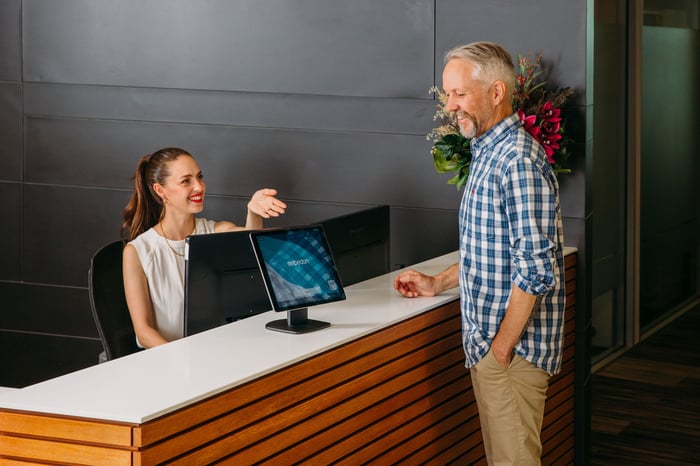
Beyond that, you can customize the sign in screen with your own screensaver and company logo to enhance the presence of your brand and create a better sense of connection for your visitor. Employees are automatically notified once their visitors have arrived meaning less time for visitors waiting around in the reception area. These small changes can make a positive and significant difference to the visitor experience at your workplace.
5. Assists during emergencies
Goodbye trusty clipboard and paper; a visitor management system help with emergency evacuation roll calls too, making it important for the health and safety of visitors and employees alike. With SwipedOn, the process is intuitive and the tablet can easily be removed from the stand, taken to the meeting point and - most importantly - used without internet connection to perform the roll call.
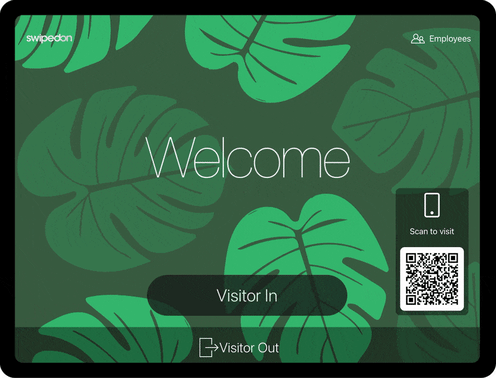
6. Keeps a record of visitors
Be audit-ready with detailed data when you need it. Digitized visitor management systems are important for knowing who has been in your building and when. All data is recorded and stored securely in the cloud and can easily be downloaded by an admin when the need arises.
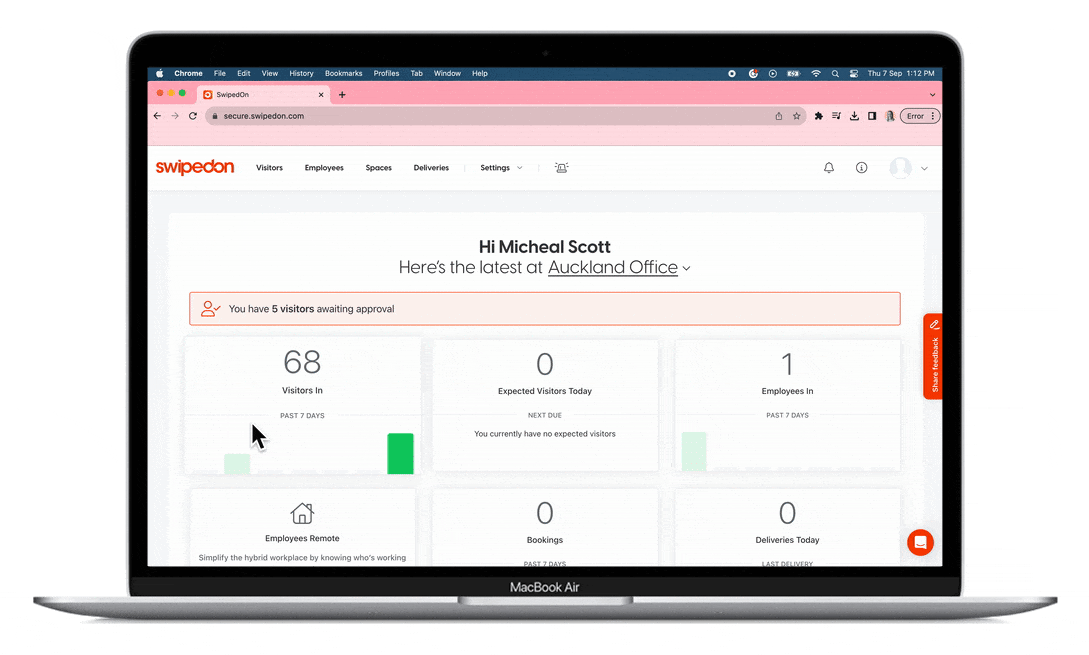
7. Simplifies processes by digitizing the workflow
According to Zipdo, 67% of employees say multitasking is a significant workplace distraction. Installing a visitor management system is an important way to reduce the visitor sign-in burden and associated stress for your front desk staff. It allows more time for them to attend to more urgent matters, without jeopardizing the visitor experience and that vital first impression. Once visitors sign in, your front desk staff can receive an instant notification, automatically providing the details of the registered visitor.
8. Gain cost efficiency
A visitor management system is important for helping any evolving business gain cost efficiency. Streamlining and boosting the speed of visitor registration reduces visitor processing costs over time. Visitors simply sign in using a tablet at reception, automating this process so your receptionist can focus on other tasks. Furthermore, a reduced amount paper is being used (not to mention the frustrations of multiple lost pens in one working week 😱) which means lower stationary costs for your organization.
9. Replaces outdated methods with intuitive technology
Everyone benefits thanks to the intuitive technology offered by a VMS. Introducing new technology also means training receptionists, employees, and visitors how to use the new system. So, an important benefit of visitor management software is that everyone can use it; visitors, employees, and administrators alike. Here at SwipedOn the experience for all these people is our highest priority, and ease of use is at the core of what we do.
Movements are documented and tracked, reports can be pulled easily, admins can see who was in the building and when at the touch of a button. Visitors and employees alike can easily sign in with their own smart phones. And the technology itself is incredibly intuitive.
TLDR: Why a visitor management system is important
The visitor management system is an indispensable part of an organization’s processes. Not only does it streamline operations, but it also ensures the safety and security of employees and elevates your branding. Reception staff appreciate the extra time and reduced burden, security is enhanced, and visitors can quickly and easily sign-in, while the created efficiencies reduce costs in the long run. Get a hands on experience and start a free trial.



-929560-edited-003563-edited.jpg)





 Germany - Deutsch
Germany - Deutsch